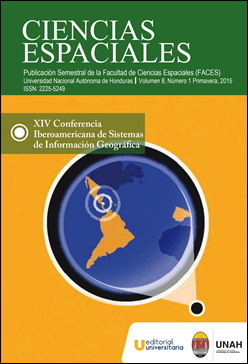Application of statistical and geostatistical techniques to develop mapping rainfall. Departments of western Nicaragua
DOI:
https://doi.org/10.5377/ce.v8i1.2046Keywords:
Statistical Methods, IDW interpolation methods, mapping, Linear ModelsAbstract
One of the great needs that occurs in Nicaragua in recent years, is the study, which involved climatic, land use for different activities it is practiced in the Pacific Region of Nicaragua, interested in doing this type of analysis, as it is here, where there is the greatest concentration of population of the country, for this region through the volcanic mountain range, which helps to have a very fertile soil and large expanses of plain, used for the cultivation of sugar cane, peanuts, sesame seeds, grains, fruits, etc.. As necessary studies, which involved the climatic variables, precipitation and temperature, and continuously analyzing the behavior of these in the territory. The Nicaraguan Institute of Territorial Studies (INETER) provided information of varying precipitation and monthly and annual temperature for the period 1954 to 2009, with the discrete observations of 28 stations (precipitation) and 3 stations to measure temperature (very few for interpolation), located in different parts of the departments of Chinandega, León and Managua, located in western Nicaragua, the number of observatories provided is sparse and after homogenization and complete data where no information is available, it are reduced to 18 stations (precipitation) and the period 1984-2005. In this paper we apply, the Statistical Methods that allow a discussion of the relationship between climatic variables and other variables, using Regression Models, analyze the precipitation, as the dependent variable and the independent variables, latitude, longitude and elevation (using the contour) and a Temporary Serial analysis for a meteorological station located in Chinandega and analyze the behavior of the variable precipitation over time. There have been various continuous mappings average monthly precipitation for the period 1984-2005, using the IDW interpolation method and analyze the quality of the different continuous maps.
Revista Ciencias Espaciales, Volumen 8, Número 1 Primavera, 2015; 143-159
Downloads
1158




